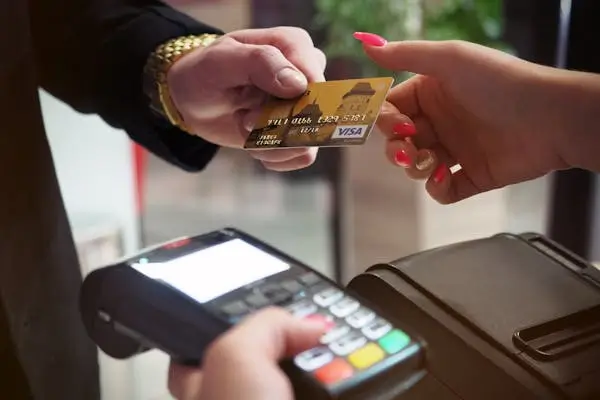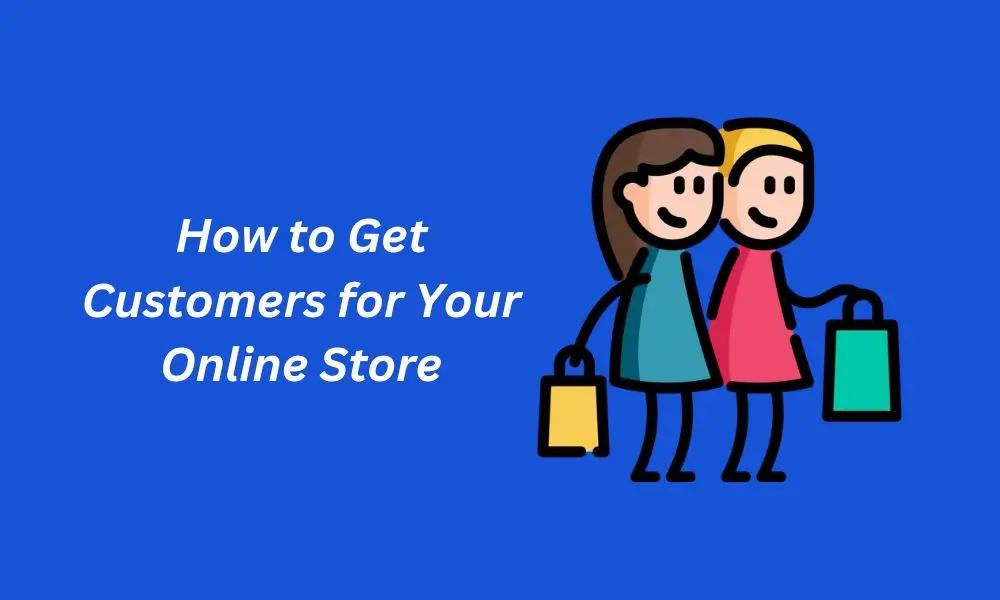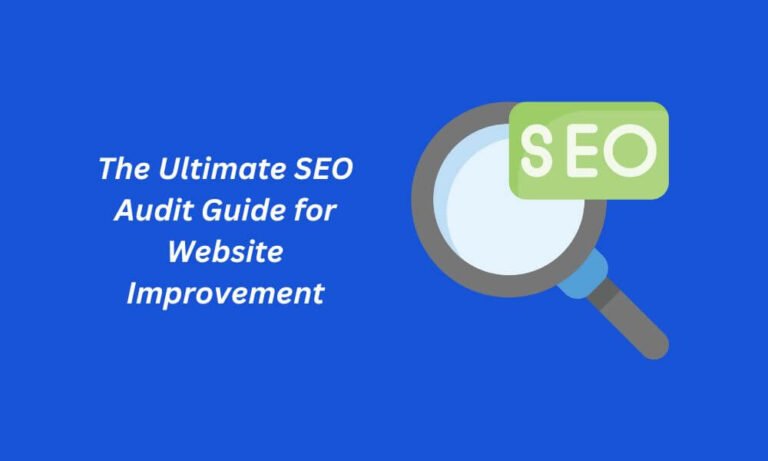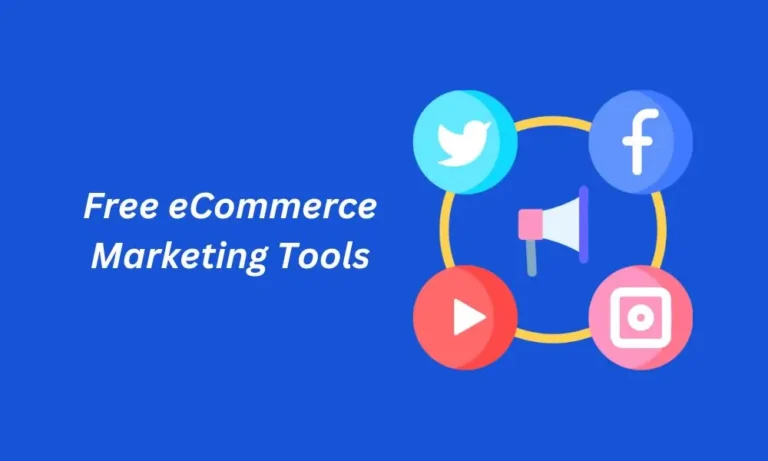In this blog post, you’ll learn how to get your first 10 customers online for your eCommerce website.
Introduction
Starting an online business is a thrilling journey, but one of the most challenging aspects is gaining your first customers. For many entrepreneurs, the hardest part is figuring out how to attract those first 10 sales. It might feel overwhelming, especially if you’re starting from scratch without a large budget or a massive audience.
The good news? It’s possible to go from zero to sales by implementing smart, actionable strategies that don’t require huge investments. In this blog post, we’ll break down the process step by step, showing you how to get your first 10 customers online with a blend of creative marketing, relationship building, and targeted outreach.
How to Get Your First 10 Customers Online

Getting your first customer has never been easier. That’s why in this blog post, you’ll learn how to get your first 10 customers online when starting your eCommerce website.
1. Understand Your Target Audience
Before you even think about generating sales, it’s crucial to understand who your ideal customer is. Trying to sell to everyone will get you nowhere, but catering to a specific group of people will help you refine your marketing efforts and attract customers who are ready to buy.
Ask yourself the following questions:
- Who is most likely to need or want my product?
- What are their pain points, and how does my product solve them?
- Where do they spend time online? (e.g., social media platforms, websites, forums)
- What influences their purchasing decisions?
By answering these questions, you’ll start building a clear profile of your target audience, which will shape how you position your product, create content, and market it.
Pro Tip:
Build customer personas that include demographic information (age, gender, income, etc.), behavior patterns, motivations, and goals. This will guide your outreach and make your marketing more focused.
2. Create a Compelling Offer
Now that you know who you’re selling to, it’s time to create an irresistible offer. People are bombarded with options online, so you need to stand out.
A compelling offer doesn’t just mean discounts; it’s about the unique value your product or service provides. Consider what makes your product special and how you can entice people to take action.
Ideas for creating a strong offer:
- Limited-time discount: Creating urgency with a time-limited discount can push potential customers to buy.
- Free trial: Offering a no-obligation free trial for a service-based product can be an effective way to lower barriers.
- Bundle offers: Combining products into a bundle at a reduced price makes the offer seem more valuable.
- Free shipping: If you’re selling physical products, free shipping is a tried-and-true method for increasing conversions.
Always frame your offer in a way that highlights the benefits your customers will get. Show them how it will make their life easier, better, or more enjoyable.
3. Build a High-Converting Landing Page
Your website is the foundation of your sales strategy, and more specifically, your landing page—the place where visitors arrive and (ideally) take the next step toward becoming a customer. A high-converting landing page should be clear, concise, and drive visitors toward one action: buying your product or signing up.
Key elements of a successful landing page:
- Clear headline: Your headline should immediately communicate what your product does and why it’s valuable.
- Compelling copy: Use persuasive language that addresses the customer’s needs and offers solutions.
- Strong visuals: Images or videos of your product in action create a sense of trust and tangibility.
- Call-to-action (CTA): A strong CTA encourages users to take the next step, whether that’s making a purchase or signing up.
- Testimonials or social proof: If you have early customers or testers, use their feedback to build credibility.
Optimize your landing page to convert visitors into customers by continuously testing and tweaking elements such as headlines, images, CTAs, and offers.
4. Leverage Your Personal Network
Your personal and professional network can be one of your most valuable assets when getting your first 10 customers. Reach out to friends, family, and acquaintances who might be interested in your product or know someone who is.
Ways to engage your network:
- Send personal messages: A personalized email or message explaining what you’re offering can go a long way.
- Social media shoutouts: Don’t be afraid to promote your product on your personal social channels.
- Ask for referrals: Even if your network isn’t interested in your product, ask them to share it with someone who might be.
People who know you are more likely to give your business a chance and help spread the word. Additionally, these initial connections can help you build momentum and social proof.
5. Utilize Social Media to Build Awareness
Social media is a powerful tool for building an audience and attracting customers, but it’s important to approach it with a strategy. Start by identifying the platforms your target audience spends the most time on—this could be Instagram, Facebook, LinkedIn, or even TikTok.
How to use social media to get your first 10 customers:
- Post valuable content: Share posts that engage and inform your audience rather than just selling to them. Content should be a mix of product information, behind-the-scenes glimpses, educational content, and user-generated material.
- Leverage hashtags: Use relevant and popular hashtags to increase the visibility of your posts and reach new potential customers.
- Engage with others: Comment on posts, join discussions, and interact with followers. Genuine engagement builds relationships and can lead to sales.
- Use stories and live video: Social media stories and live video content can be highly engaging and allow you to interact with your audience in real-time.
Don’t forget to include a CTA in your posts, whether it’s encouraging followers to visit your website, sign up for an offer, or share your content.
6. Offer Incentives for Referrals
One of the most effective ways to grow your customer base is through word-of-mouth and referrals. When people trust a recommendation from someone they know, they are much more likely to convert into paying customers. Setting up a referral program is a fantastic way to encourage your early customers to spread the word.
Ways to structure your referral program:
- Discount for both parties: Offer a discount to both the referrer and the new customer to create a win-win scenario.
- Cash rewards: A small monetary reward can motivate people to refer your product or service.
- Exclusive perks: Offer something exclusive that your customers can’t get anywhere else, such as early access to a new product or free upgrades.
Referrals work because they come from a place of trust, making them a high-conversion strategy.
7. Collaborate with Micro-Influencers
Influencers don’t have to have millions of followers to make an impact on your sales. In fact, micro-influencers (those with 1,000–100,000 followers) often have highly engaged audiences who trust their recommendations. Collaborating with micro-influencers in your niche can introduce your product to a new audience and drive sales.
Steps to collaborate with micro-influencers:
- Identify relevant influencers: Search for influencers who align with your brand’s values and target audience.
- Reach out with a proposal: Offer a mutually beneficial arrangement, such as free products in exchange for a review or a commission on sales they generate.
- Track performance: Use tracking links or discount codes to monitor the impact of influencer collaborations.
Micro-influencers tend to have loyal audiences, which can help you quickly gain traction and earn your first 10 customers.
8. Engage in Niche Communities
Niche communities are goldmines for online businesses looking to make their first sales. These are often smaller but highly engaged online spaces where people gather around specific interests or problems. You can find niche communities on platforms like Reddit, Facebook groups, or specialized forums.
How to leverage niche communities:
- Join discussions: Start by participating in conversations to get a feel for the community’s needs and issues.
- Offer value before selling: Don’t jump straight into self-promotion. Provide value by answering questions, sharing insights, and offering helpful advice.
- Introduce your product organically: Once you’ve established yourself in the community, introduce your product in a way that highlights how it can solve their problems.
Being genuine and not overly promotional will increase your chances of converting these community members into customers.
9. Use Paid Advertising for a Quick Boost
Paid advertising on platforms like Facebook, Google, or Instagram can give you a quick boost in traffic and sales, even on a small budget. For businesses trying to get their first 10 customers, paid ads can help you reach a highly targeted audience based on demographics, interests, and behaviors.
Tips for starting with paid ads:
- Target a narrow audience: Start with a small, highly targeted audience that fits your ideal customer profile. The more specific you are, the better your chances of converting leads.
- Use retargeting ads: Retarget people who visited your website but didn’t convert. Sometimes it takes a few touchpoints for someone to make a purchase.
- Test different ad creatives: Experiment with different images, videos, and copy to see what resonates best with your audience.
Paid ads can accelerate your progress toward securing your first 10 customers, but be sure to monitor the results carefully to maximize your ROI.
10. Optimize for Search Engines (SEO)
Search engine optimization (SEO) is one of the most powerful long-term strategies for generating organic traffic and sales. While SEO takes time, starting early can help you get noticed by customers who are actively searching for your product.
SEO strategies to consider:
- Keyword research: Use tools like Google Keyword Planner or Ubersuggest to identify the keywords your target audience is searching for.
- Optimize your product pages: Ensure that your product titles, descriptions, and meta tags include the right keywords.
- Create valuable content: Write blog posts or create videos that answer common questions related to your niche or product. This can drive traffic to your site and establish your brand as an authority.
Though it’s not an overnight solution, optimizing your website for SEO will generate ongoing traffic and leads that can turn into sales over time.
Conclusion
Getting your first 10 customers online can feel daunting, but it’s a completely achievable goal if you follow the right strategies. It’s all about building relationships, providing value, and being persistent in your outreach efforts. By understanding your target audience, creating a compelling offer, leveraging social media, and utilizing referral and influencer marketing, you can generate momentum and see those first sales roll in.
From there, it’s all about scaling your efforts, refining your approach, and continuing to serve your customers with exceptional products and service. Whether you’re just starting out or looking to jumpstart your sales, these strategies will help you move from zero to sales in no time.
Frequently Asked Questions
1. What’s the most important thing to focus on when trying to get my first 10 customers?
The most important thing is understanding your target audience. Knowing who your ideal customers are and what they need will guide your marketing, content, and outreach efforts. Focus on solving their specific problems and providing value, and your chances of making sales will increase significantly.
2. How can I leverage my personal network without feeling like I’m being too pushy?
When reaching out to your personal network, keep the conversation personal and genuine. Explain why you’re excited about your new business and how your product can help them or someone they know. You’re not just selling—you’re sharing something valuable. Asking for referrals rather than direct purchases can also ease the pressure.
3. Do I need to use paid advertising to get my first 10 customers?
Paid advertising isn’t required, but it can accelerate the process. If you have a small budget, targeted ads on platforms like Facebook or Instagram can help you quickly reach your ideal audience. However, organic strategies like leveraging social media, collaborating with influencers, and engaging in niche communities are also effective.
4. How do I create a compelling offer that will attract my first customers?
A compelling offer solves a specific pain point and provides clear value. Consider using tactics like limited-time discounts, free shipping, or bundle deals. Ensure that your offer is clearly communicated, easy to understand, and framed in a way that shows how it benefits the customer.
5. Can I get my first 10 customers without a large social media following?
Yes, you don’t need a large following to make your first sales. Focus on engaging with your existing network, joining relevant niche communities, and collaborating with micro-influencers. Even small audiences can convert well if they are highly targeted and engaged.
6. How long does it take to get my first 10 customers?
The timeline can vary depending on your efforts, the market, and how well you know your target audience. Some businesses may achieve this within days or weeks, while others may take longer. Consistency is key—by continuously refining your approach and staying persistent, you’ll see results over time.





Thank you for the great content. Keep it up!